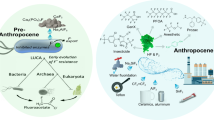Abstract
ARTIFICIAL hatching agents for Heterodera schachtii have often been sought1, but only two substances, 3,9-diamino 7-ethoxyacridine (rivanol) and 9-amino-acridine, have been reported to give hatches approaching that obtained in sugar-beet root diffusate2.
This is a preview of subscription content, access via your institution
Access options
Subscribe to this journal
Receive 51 print issues and online access
$199.00 per year
only $3.90 per issue
Buy this article
- Purchase on Springer Link
- Instant access to full article PDF
Prices may be subject to local taxes which are calculated during checkout
Similar content being viewed by others
References
Shepherd, A. M., Emergence of Larvæ from Cysts in the Genus Heterodera, 90 (Comm. Agric. Bur., Farnham Royal, 1962).
Winner, C., Nematologica, 2, 126 (1957).
Clarke, A. J., Rep. Rothamsted Exp. Sta., 112 (1960).
Gurr, E., Encyclopaedia of Microscopic Stains, 497 (Leonard Hill, London, 1960).
Author information
Authors and Affiliations
Rights and permissions
About this article
Cite this article
SHEPHERD, A. Dyes as Artificial Hatching Agents for Beet Eelworm, Heterodera schachtii Schm.. Nature 196, 391–392 (1962). https://doi.org/10.1038/196391a0
Issue Date:
DOI: https://doi.org/10.1038/196391a0
This article is cited by
Comments
By submitting a comment you agree to abide by our Terms and Community Guidelines. If you find something abusive or that does not comply with our terms or guidelines please flag it as inappropriate.



